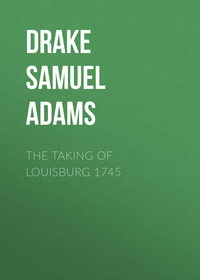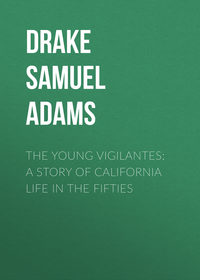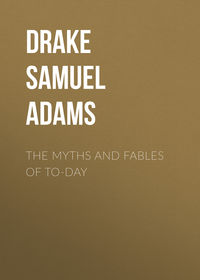 полная версия
полная версияBurgoyne's Invasion of 1777
40
Sir John Johnson was the son of Sir William, who gained wealth and a title by his victory over Dieskau at Lake George, 1755. He was also the king's superintendent over the Six Nations, and had his residence at Caughnawaga, since called Johnstown in his honor. Sir John succeeded to his father's title and estates. He took sides with the Royalists, raised a body of Tory followers, and with them fled to Canada. Out of these refugees, he raised a corps of rangers called Royal Greens, with whom he joined St. Leger, in the hope of crushing out his enemies in the valley.
41
General Gates had resigned his command at Ticonderoga, rather than serve under Schuyler. There was no good feeling between them.
42
Morgan's Riflemen was the most celebrated corps of the Continental Army. The men were unerring marksmen, and on that account greatly feared by the British. All were expert woodsmen, devoted to their leader, who held them under strict discipline.
43
Thaddeus Kosciusko came to this country to offer his services to Congress. "What can you do?" asked Washington. "Try me," was the laconic reply. In course of time, he was sent to Schuyler as engineer of his army.
44
Freeman's House was made use of by Burgoyne, during the battle of September 9, as his headquarters. After this battle it was included within the British lines.
45
Battle of Bemis' Heights. Bemis' Heights formed part of the American position, but not of the battle-ground. Freeman's Farm would have been a more accurate designation. Stillwater locates it anywhere within a township of many miles in extent.
46
Arnold's Part in this battle has been long a matter of dispute. Gates was jealous of him because he was the idol of his soldiers. Arnold had no high opinion of Gates. After Arnold turned traitor, every one seems to have thought it a duty to give him a kick. This feeling is unfortunately conspicuous in the only detailed account from the American side we have of this battle, which was written by Wilkinson, Gates's adjutant-general, and given to the world nearly forty years (1816) afterwards. Wilkinson seems to have fully shared his commander's likes and dislikes, and has treated Arnold shabbily. The battle was almost wholly fought by Arnold's division, and it is equally incompatible with his duty and temper to suppose he would have remained in camp when his troops were engaged, though he was probably held back until a late hour in the day.
47
Colonel John Brown, of Pittsfield, Mass., – who had been with Allen at the taking of Ticonderoga in 1775, and with Montgomery at Quebec, – Colonels Warner, Woodbridge, and Johnson coöperated in this expedition.
48
Ticonderoga was garrisoned at this time by one British and one German battalion, under command of General Powell.
49
Gates's Camp. By this time, Gates also had connected his camp with the east bank of the Hudson, by a floating bridge, to facilitate the crossing of reënforcements to him.
50
The Right Wing was composed of Nixon's, Glover's, and Patterson's Continental brigades, with a certain proportion of militia. The left wing of Poor's and Learned's brigades, Dearborn's Light Infantry, and Morgan's corps, with a like proportion of militia.
51
Sir Henry Clinton then commanded at New York, under the orders of Sir William Howe. Not having received orders to assist Burgoyne in any event, until he was about to engage with Washington for the possession of Philadelphia, Howe turned over the matter of assisting Burgoyne to Clinton, who was compelled to wait for the arrival of fresh troops, then on the way from England, before he could organize an expedition to attack our posts in the Highlands of the Hudson. See Introduction; also Note 1, "Facing Disaster" (p. 60).
52
General Simon Frazer was of Scotch birth, younger son of Frazer of Balnain. His actual rank on joining Burgoyne was lieutenant-colonel, 24th foot. With other field officers assigned to command brigades, he was made acting brigadier, and is therefore known as General Frazer, though Burgoyne was notified that this local rank would cease when his army joined Sir William Howe. Frazer's remains were disinterred and taken to England. The spot where he was wounded is marked by a monument, and indicates where he endeavored to make a stand after being driven from his first position. Anburey and Madame Riedesel give graphic accounts of his death and burial.
53
Frazer's Burial would not have been molested had our artillerists known what was going forward. Seeing so many persons collected in the redoubt, they naturally directed their fire upon it.
54
This Body of Americans was led by Colonel John Fellows, whom Gates had ordered to seize the fords as high up as Fort Edward.
55
Fishkill, or Fish Creek, is the outlet of Saratoga Lake. Though a rapid mill-stream, there were several fords. The precipitous banks were a greater obstacle to troops than the stream itself.
56
Heights of Saratoga are in what is now called Schuylerville, a village owing its prosperity to the water-power of the Fishkill. At the time of the surrender, there were only a few houses strung along the river road. Schuyler's house stood in the angle formed by the entrance of the Fishkill into the Hudson. On arriving at Saratoga, Burgoyne occupied this house as his headquarters, but burned it to the ground immediately on the appearance of the Americans. On the opposite (north) bank of the Fishkill was old Fort Hardy, built during the French War, to cover the ford of the Hudson at this place. Within this fort, Burgoyne's army laid down its arms, October 17, 1777. On the heights back of the river a granite obelisk, one hundred and fifty-four feet high, has been built to commemorate the event.
57
Clinton's Forces carried Forts Montgomery and Clinton, in the Highlands, by assault on the sixth. Having thus broken down all opposition to their advance up the Hudson, they reached Kingston (Esopus) on the thirteenth, burned it, and were within a few hours' sail of Albany when news of Burgoyne's surrender caused them to retreat down the river.











